Liver ketchup is another piece of history I came across doing research on lamb and goat in an old Scottish book by An Comunn Gaidhealach (a seriously legit Scottish name) first published in 1907 under the title of The Feill Cookery Book.
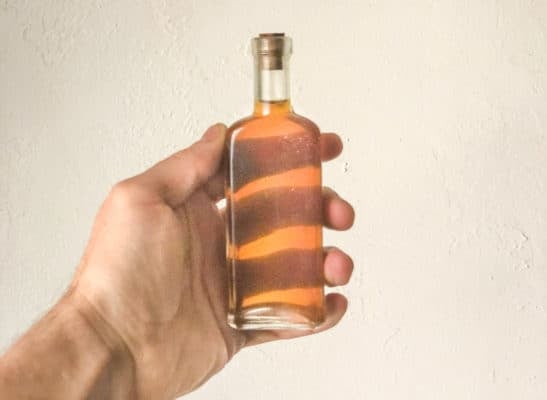
Like most of the old books I have, a lot of the recipes can be hard to reproduce: some need some modern interpretation or measurement standardizing to be approachable (handfuls and tea cups / choppies are popular measurements) while others might require some culinary understanding, like why you'd put egg whites into a salty liver sauce made from boiled liver, spices and herrings I'm going to explain.
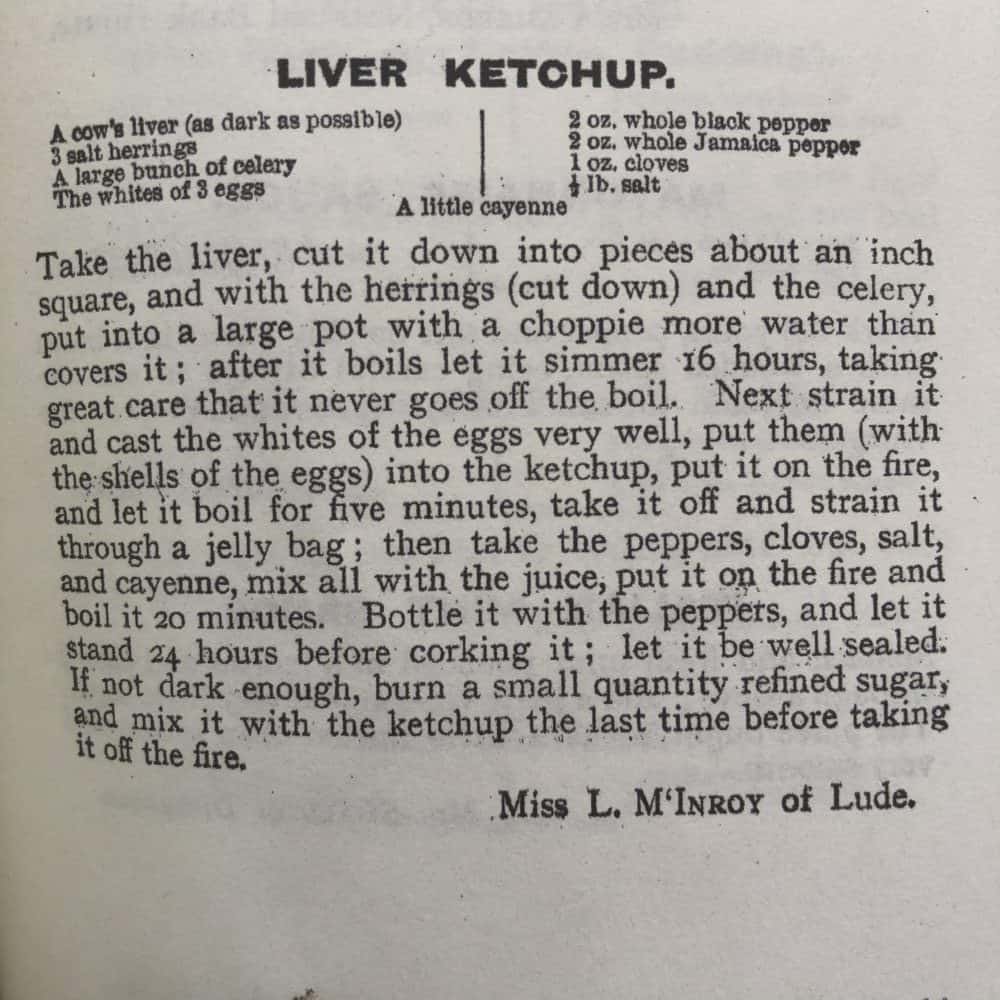
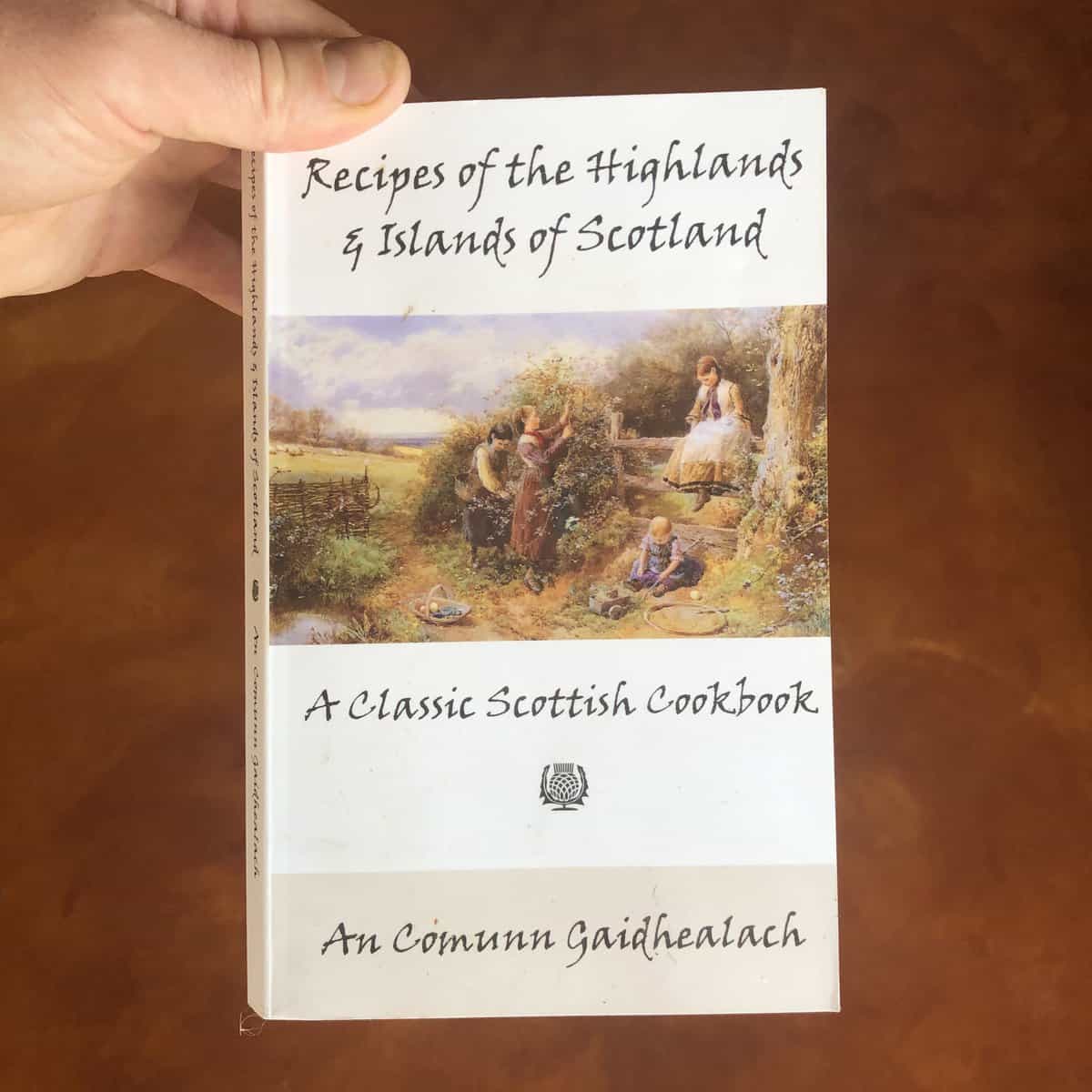
Besides being arguably the most creative way I've ever seen to use liver, it's also another another example of how the word ketchup and it's legions of cousins have evolved over time (read as you can make ketchup out of anything). Ketchup and castsups (derived from the old Asiatic fish sauces called ketsiap) were basically umami-rich or tart condiment sauces made from spices and different things--definitely not high fructose corn syrup and tomatoes. Like mushroom ketchup and garum I've mentioned before, they weren't thick sauces, but more along the lines of thin, salty condiments like fish sauce.

At first read, I knew exactly what the sauce was, but the liver really piqued my interest. I was taught that boiling liver, or otherwise cooking it in water is heresy, the reason for being that livers generally have strong flavors, especially from ruminants like lamb, goat, and venison. Those strong flavors are pretty water-soluble, and having a chunk of liver fall into your stock would be, undesirable.
Also, boiling liver in water, or any meat, isn't going to give you a pretty liquid, and the original author knew this. Their solution was the same technique chefs use to make consomme and that my great grandmother used to make coffee. Egg whites (not yolks) mixed into a liquid and heated, will purify the liquid and make it crystal clear. Now we're getting to the point of a fish-sauce analogy.
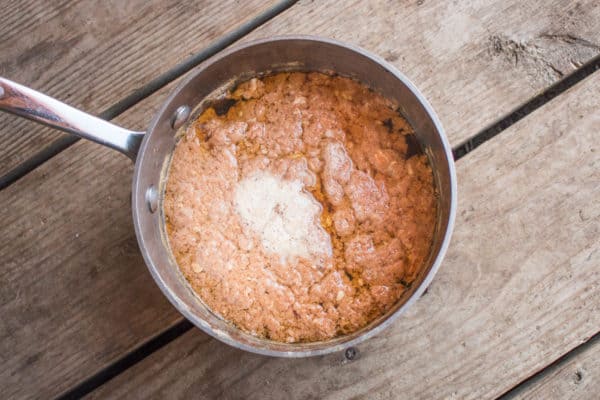
In the end, I changed a few things. Instead of boiling, I brown the liver and then brown sugar in the same pan to help build flavor, then cook the liquid to achieve a similar salt consistency as soy sauce or fish sauce, which I did by setting a goal of having a beginning salt concentration of 7-ish % which, after reducing by half, will make it around 15-ish %--a trusty salinity for shelf-stable condiment you can hot-pack, bottle and store.
Bottling with spices
After the sauce is cooked, cooled, and clarified, you add spices to flavor the finished product. While you could add spices while the sauce cooks, bottling them for a long-infusion gives you a focused, intentional infusion.
But, as the sauce is meant to be a subtle background accent to things, don't expect a dish you season with it to taste like the spices you use. I used a mix of wild prickly ash berries / Szechuan peppercorns (Zanthoxylum americanum) and regular peppercorns, but I've outlined a few variations that would be good depending on your pantry.
The finished product is a bit like fish sauce in that its a thin, salty, umami condiment to add to things as a fun seasoning. It's meant to be a background flavor though, and with the salt content, you're probably not going to put it in a bottle and shake it on a steak. Here's some places it would be good (just think fish sauce, but not fishy).
Use Ideas
- In dashes to add flavor to simple broths or thin soups like noodle soups and ramen
- As a marinade instead of salt, patting the meat dry before searing. The sugars will encourage browning, although it will be a little different than you're used to.
- Use it in place of fish sauce ferments like kimchee or dressings like thai peanut sauce.
- Add it to vinegar and oil as the salt in a salad dressing.
- Pan sauces love stuff like this. After you cook a steak in a pan, de-glaze and scrape up the browned bits with a splash of white wine, then add a ladle of chicken or meat stock, and season with a few dashes of the ketchup. Whisk in some butter and reduce the sauce to thicken, then spoon over meat or serve on the side.
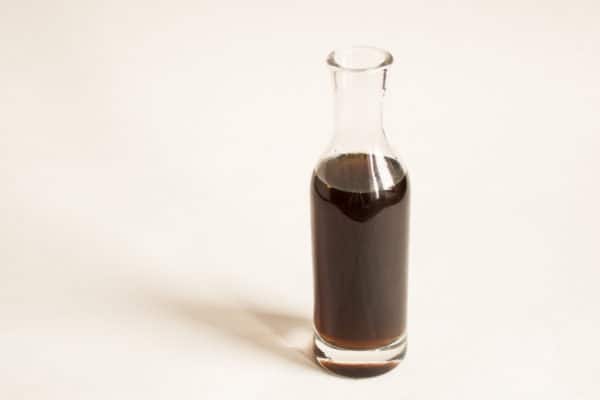
Lamb Liver Ketchup
Equipment
- Coffee filters or cheesecloth
- 1 3 quart sauce pot
Ingredients
Braising Ingredients
- 1 tablespoon white sugar See note
- 2 lbs liver venison, lamb, goat, duck--you pick
- 2 Tablespoons cooking oil
- 2 oz fresh ginger
- 1 oz fresh garlic cloves unpeeled
- 12 oz chopped celery
- 15 grams (1 tablespoon) chopped anchovy or anchovy paste
- 1 tablespoon tomato paste optional
- 1500 grams (6 cups) water
- ½ teaspoon cayenne
- 100 grams (6 scant tablespoons) salt
For clarifying the ketchup
- 2 large egg whites
Finishing Spice Options (choose one, or roughly 24 grams / 3 Tablespoons of your favorite spices)
Woodsy
- 2 Tablespoon (16 grams) juniper
- 1 Tablespoon (8 grams) black peppercorns
Szechuan Scented
- 2 Tablespoon (16 grams) dried Szechuan peppercorns
- 1 tablespoon (8 grams) black peppercorns
- ½ teaspoon red pepper flakes
18th Century Classic
- 1 tablespoon (8 grams) allspice
- 2 teaspoon (8 grams) cloves
- 1 tablespoon (8 grams) black peppercorns
Instructions
Brown the liver
- Cut the liver into 1 inch pieces, then dry it very well.
- Heat the oil in a pan, then brown the liver very well and transfer to a small saucepot with the remaining ingrdients except the sugar. In the same pan you cooked the liver, add the sugar and cook until it turns to a dark caramel.
- Quickly add a splash of water, turn off the heat (it will sputter and sizzle) then scrape up the browned bits and juice and add to the saucepot.
Slow cook
- Cover the pot tightly and bake for 6 hours at 250, then remove and cool, still covered. Strain as much liquid as possible off, then put it in a small, tall saucepan and cool. You should have about 4 cups, if you don't, add a little water.
Clarifying the ketchup
- When cooled, whisk the egg whites into the liquid.
- Put the pot on the heat, stirring constantly with a spoon, and cook on medium-high until a raft of egg starts to rise up from the bottom. Immediately turn the heat down to low and stop stirring.
- Allow the raft to rise up, which will purify the liquid and make it clear. After the raft has completely risen and you can see crystal clear liquid underneath, line a strainer well with a coffee filter or towel and wet it with water lightly. Ladle in the clarified ketchup and allow to drain naturally. Do not press or squeeze on it at all or it may get cloudy.
Bottle with spices
- After draining, bring the mixture to a simmer and bottle with your choice of the finishing spices (see note). Allow age at for a week before using. From there, the spices can be strained out after a week, or just spoon off the liquid as needed. It will keep the best flavor in a cool dark place, and will be the most stable in the fridge if it isn't processed in half pints in a water bath, which you could do.


Nina
Awesome!! Am looking forward to trying this. Thanks for the recipe and ideas for its usage. Could I use "beef" liver, ya think, in the same manner?
Alan Bergo
Yes, if you can look closely, the original recipe calls for a cows liver "as dark as possible". Any ruminant liver can be used here, and other strong ones like duck or goose would be fine too.
Deirdre Toner
Fabulous article on the Liver ketchup and also the tale of the serviceberry /cow parsnip seed sauce.
Carla Beaudet
Interesting. Do you taste the liver in the final product? I am not a fan of liver (excepting foie gras) but I always ask for the liver from our grass fed beef because I have an African claw-toed frog who pretty much lives on it. When Mr. frog dies I do not plan to replace him, so I'll either stop getting the beef livers or find something else to do with them. Could this be it?
Alan Bergo
It doesn't taste of liver in the slightest. It's tastes like mild fish sauce, without the fish. The spices you infuse it with will be at the forefront.
Carla Beaudet
Excellent! I will give it a whirl, um, after Mr. Frog croaks (sorry couldn't hep myself), that is.